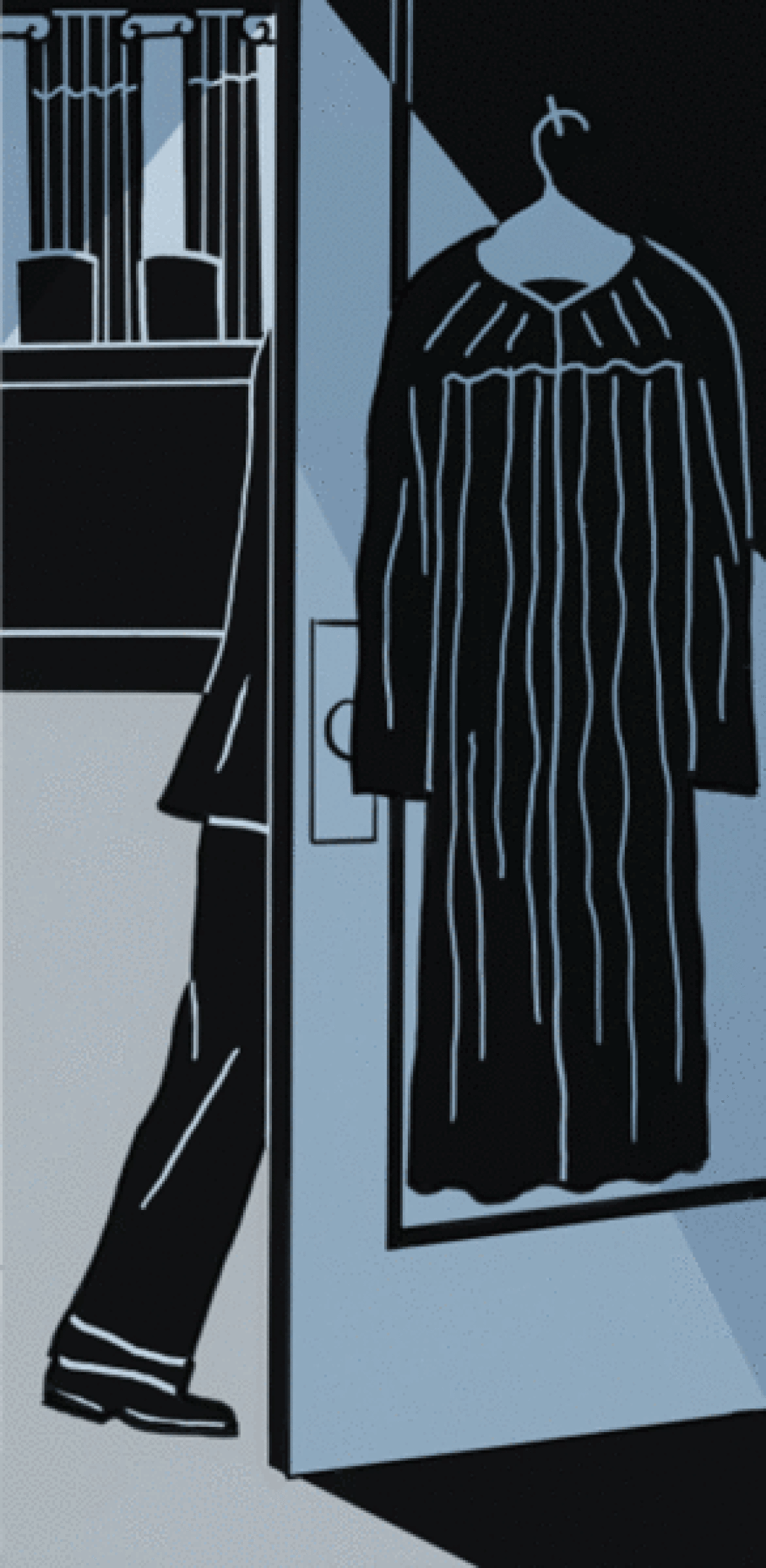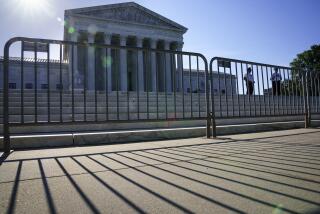Supreme Court justices: The case for hanging it up

Over the next three months, the justices of the U.S. Supreme Court will decide whether to end affirmative action, whether to overturn part of one of the most important civil rights laws in our country’s history (the Voting Rights Act) and whether gays and lesbians have a constitutional right to the same marriage benefits as heterosexual couples. In almost every term, the justices exercise veto power over fundamental policy questions such as abortion, gun control and freedom of speech and religion. There can be no denying the political and legal responsibility we place in these nine justices.
In 1803, the great Chief Justice John Marshall said in the landmark case of Marbury vs. Madison that we are a “government of laws and not of men.”
Yet the nine justices of the high court hold their positions for life and exercise virtually unreviewable power. They and only they get to decide how long they stay on the court, and they can and often do time their retirements for strategic political reasons.
Last year, Justice Antonin Scalia admitted he would not like to retire during an Obama administration. He said: “Of course, I would not like to be replaced by someone who immediately sets about undoing everything that I’ve tried to do for 25 years, 26 years, sure. I mean, I shouldn’t have to tell you that. Unless you think I’m a fool.” Justices on both the left and the right are cognizant of how their retirements affect the political makeup of the court. This kind of attitude suggests a government of men, not laws.
No other Supreme Court judges in any Western democracy hold their positions for life. The original rationale for this highly anti-democratic idea was that the justices needed to be independent from the elected branches so that they could enforce the Constitution and decide cases without fear of political retaliation. But the Founding Fathers did not anticipate that the justices would be appointed so young and live so long. The average length a justice currently serves is 26 years. The newest justice, Elena Kagan, was appointed at age 50 and could conceivably serve on the bench for 40 years. If so, the country she presides over in 2050 will be dramatically different from the one she was originally called on to serve.
The founders also didn’t anticipate that the justices would use the power of judicial review to act as a final veto council over important public policy issues not resolved by the Constitution. Alexander Hamilton, the founder who thought and wrote the most about the court, said the justices should overturn laws only when they were at an “irreconcilable variance” with the Constitution. The high court’s decisions invalidating laws concerning affirmative action, abortion, gun control and the regulation of commerce do not come close to meeting that standard.
Because the justices hold their offices for life, there are many examples of some who serve too long. As the historian David Garrow noted in his 2000 analysis of the problem, “mental decrepitude among aging justices is a persistently recurring problem.”
In modern times, Justices William O. Douglas, William H. Rehnquist and Thurgood Marshall all stayed on the bench past the point when they could competently serve the country. For example, as Garrow reported, Douglas stayed on the court after having a stroke, often fell asleep on the bench and was so disoriented that the justices decided not to decide any cases in which his vote would matter. During the last few years of his career, Marshall reportedly told his clerks to simply vote the way Justice William Brennan did. He also was openly confused about the identity of the parties during an antitrust case decided late in his career.
No governmental official in a democracy should be told: Here is your job, no one reviews your decisions and you will never be held accountable or be fired for your performance. Even people of great character and humility can eventually be tempted to abuse their power under such circumstances.
Can you imagine giving the chief executive of a company life tenure and unreviewable power? Of course not, because you would be afraid the person might make decisions you don’t like, and there would be nothing you could do about it for as long as that person lived or decided to stay on the job. Now make that person one of the most important political actors in our constitutional democracy and the problem becomes obvious.
Supreme Court justices need to be independent of the elected branches and the people, but they don’t need life tenure to adequately perform their jobs. Numerous scholars have come up with plans that would allow them to do so, including one popular proposal for 18-year fixed terms, plus a salary for life.
There should also be a prohibition on the justices taking any other job after retirement other than one sitting on the lower courts. Even with those conditions in place, there would still be a long line of superstar lawyers and law professors lining up to be nominated to be a Supreme Court justice.
The role of the Supreme Court in our system of government is not the one the Founding Fathers anticipated, and life expectancies now far exceed what they were when the Constitution was adopted. Let’s have a serious discussion about amending the Constitution to abolish life tenure for Supreme Court justices.
Eric J. Segall, a law professor at Georgia State University, is the author of “Supreme Myths: Why the Supreme Court Is Not a Court and Its Justices Are Not Judges.” He tweets at @espinsegall.
More to Read
A cure for the common opinion
Get thought-provoking perspectives with our weekly newsletter.
You may occasionally receive promotional content from the Los Angeles Times.










